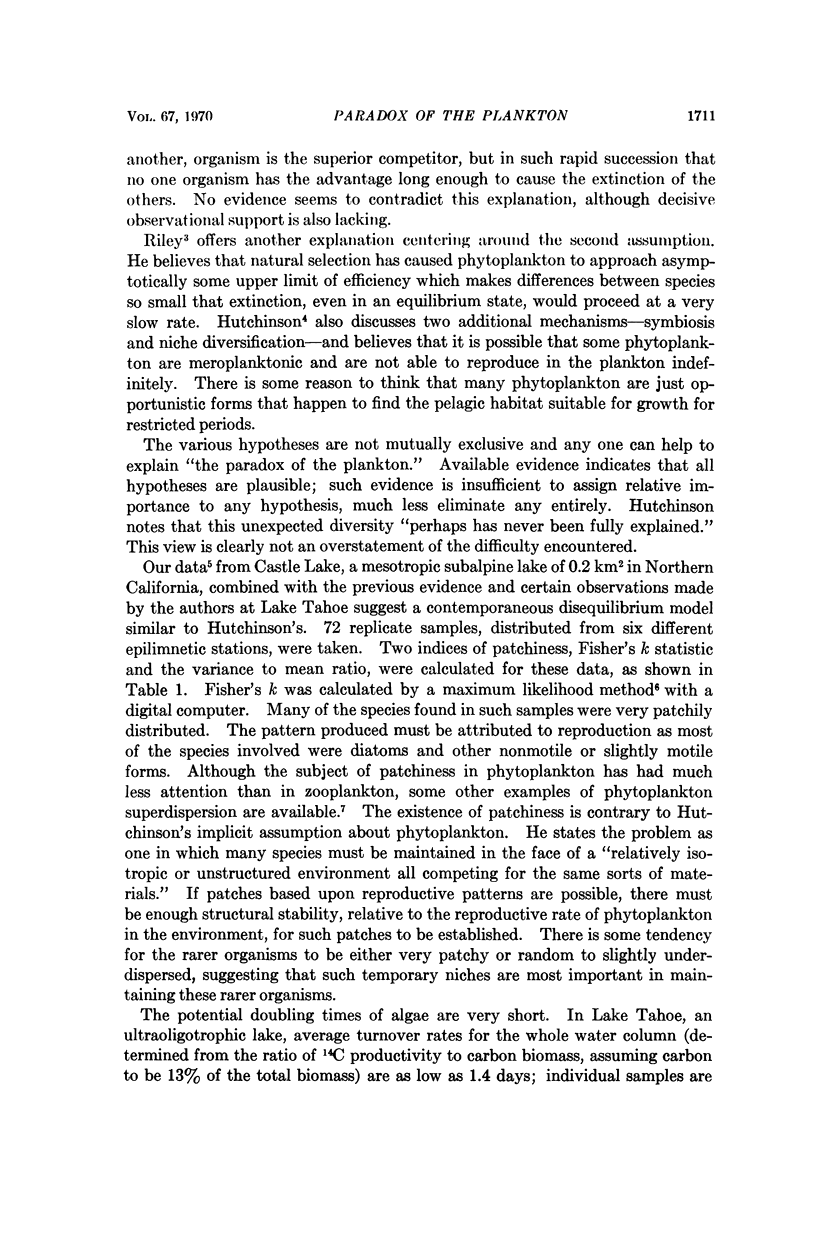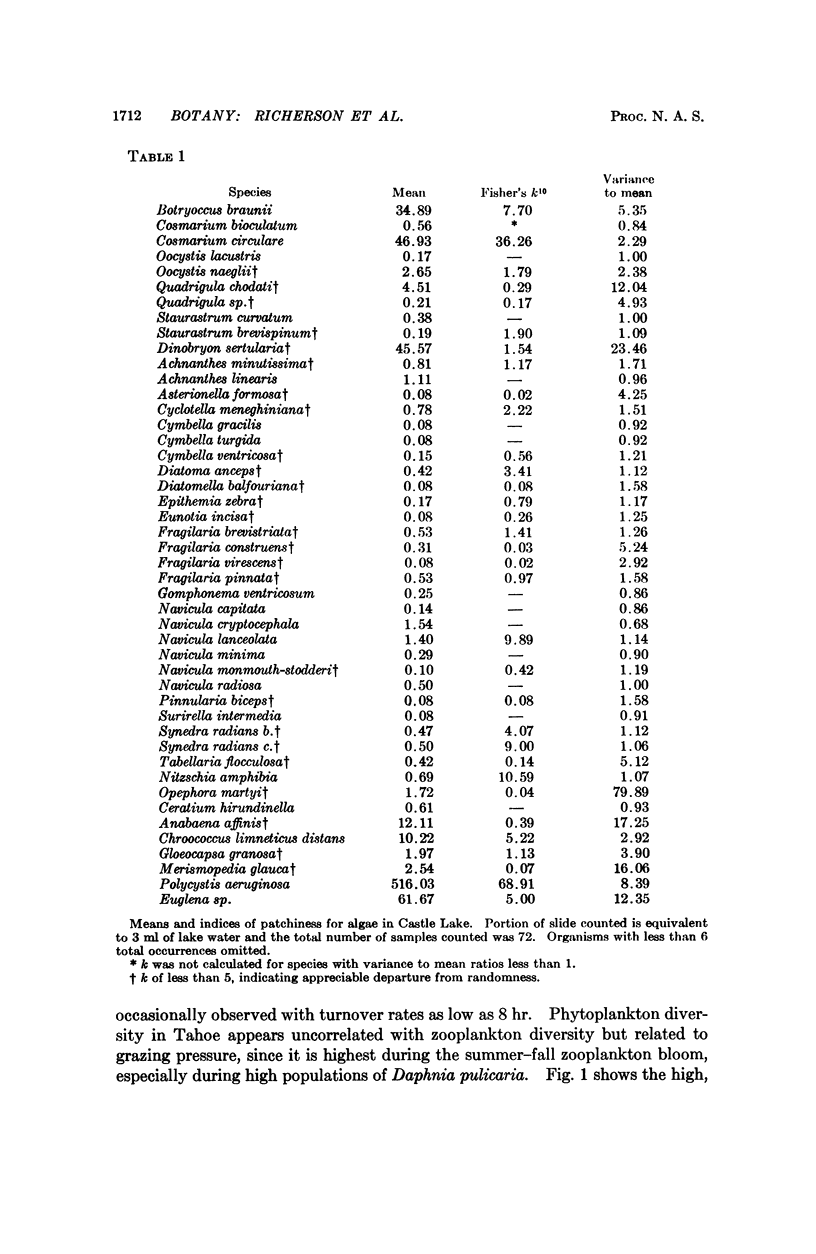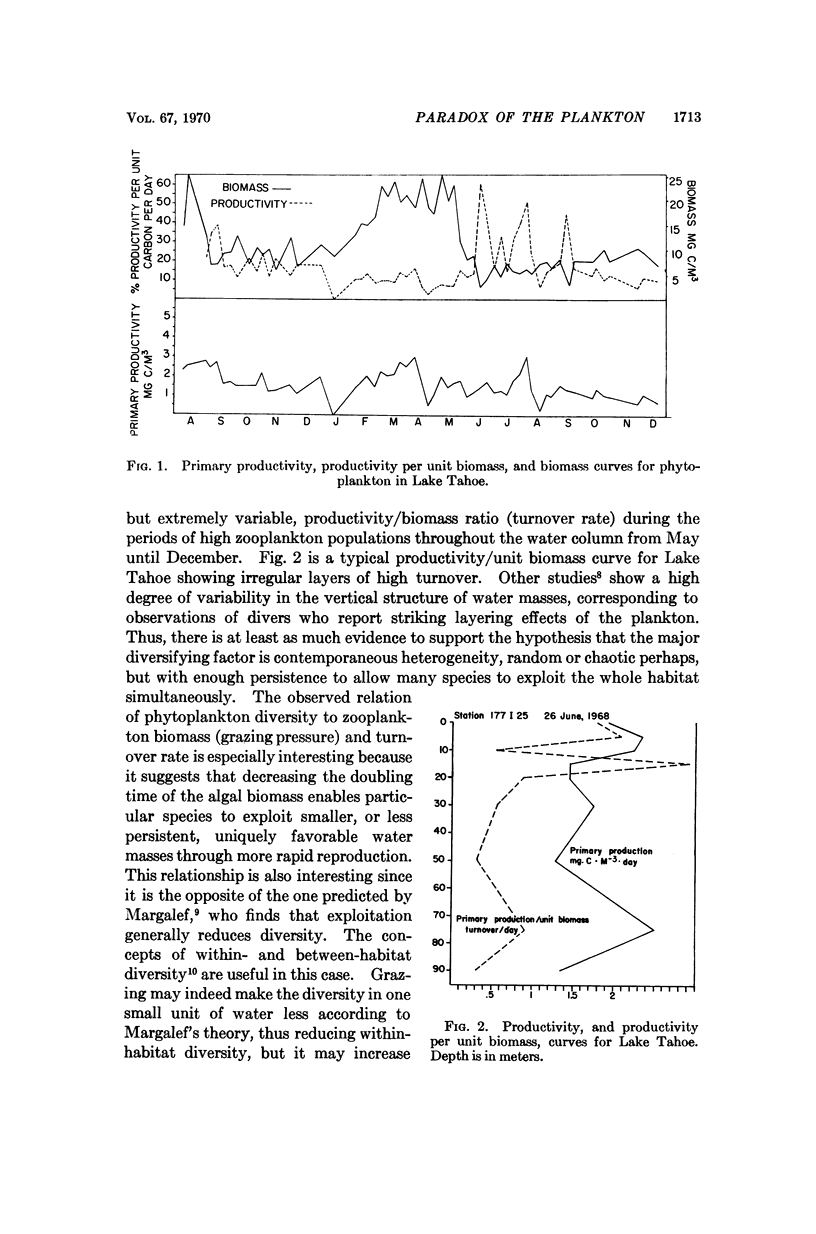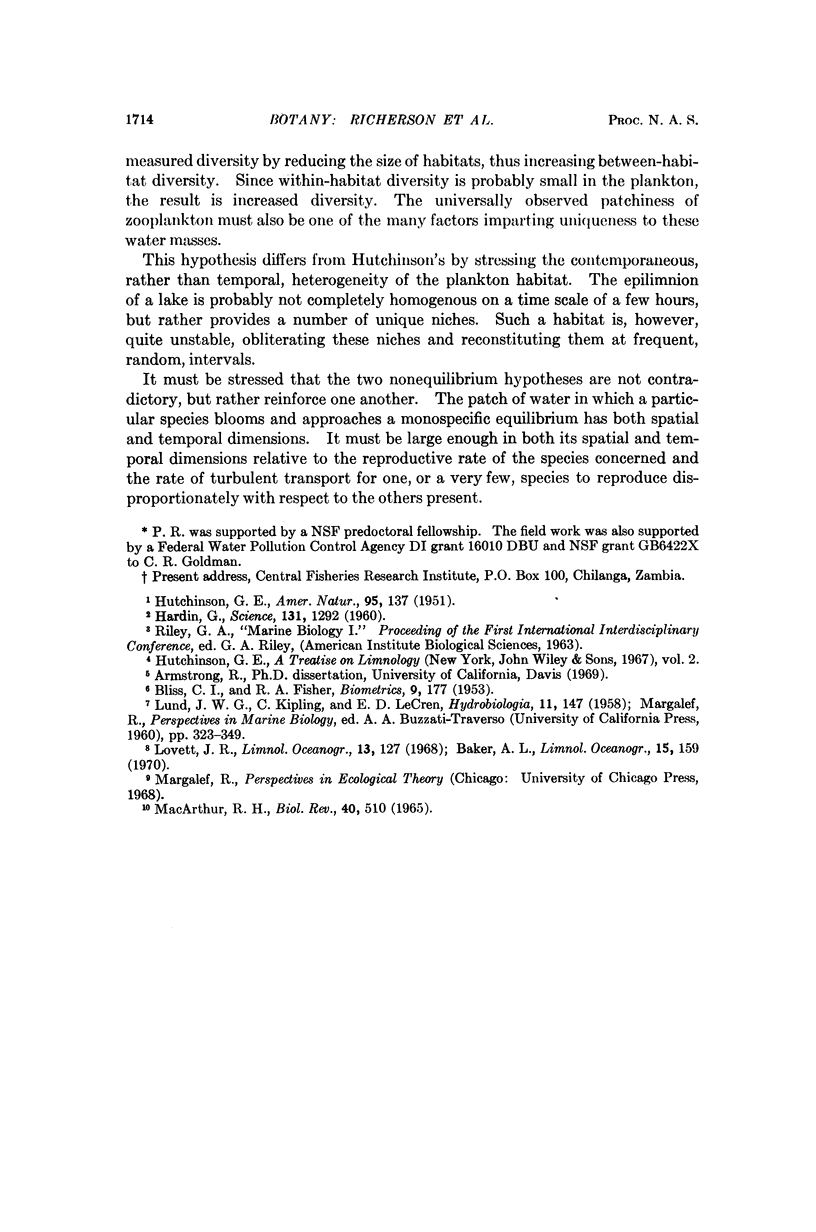Abstract
The diversity of lake phytoplankton is unexpectedly high, since the epilimnion of a lake is continuously mixing and might be expected to have only one or at most a few niches for primary producers. However, a carefully replicated series of samples from Castle Lake, Calif., showed a high degree of patchiness for many phytoplankton species, indicating that the rate of mixing is slow enough relative to the reproductive rate of the algae for many different niches to exist simultaneously. Productivity per unit biomass ratios, measured at Lake Tahoe, California-Nevada, shows that the turnover times for carbon in even this ultraoligotrophic lake are often less than 1 day. High diversity is associated with high productivity per unit biomass and high zooplankton populations in this lake.
A contemporaneous disequilibrium model to explain the diversity of the lake phytoplankton is therefore highly plausible. At any one time, many patches of water exist in which one species is at a competitive advantage relative to the others. These water masses are stable enough to permit a considerable degree of patchiness to occur in phytoplankton, but are obliterated frequently enough to prevent the exclusive occupation of each niche by a single species.
Full text
PDF




Selected References
These references are in PubMed. This may not be the complete list of references from this article.
- HARDIN G. The competitive exclusion principle. Science. 1960 Apr 29;131(3409):1292–1297. doi: 10.1126/science.131.3409.1292. [DOI] [PubMed] [Google Scholar]


